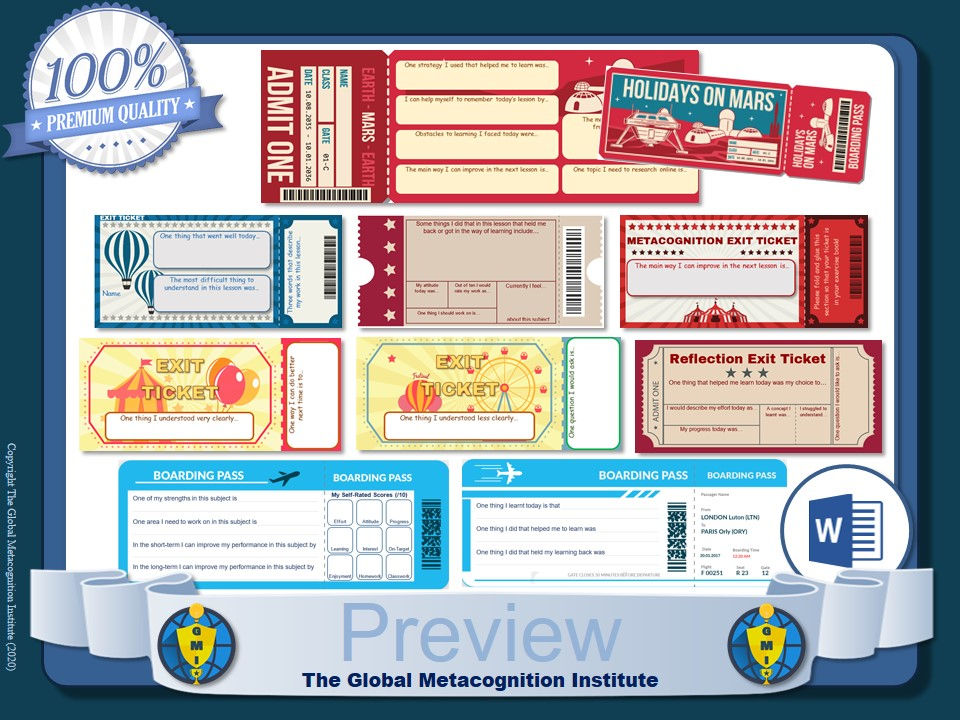Metacognition, metacognitive strategies, and metacognitive awareness are all essential components of successful learning in the mathematics classroom. In this article, we will explore the importance of these concepts and how they can be utilized to enhance students' mathematical understanding and problem-solving skills.
Metacognition is the ability to think about one's own thinking processes. It involves understanding how one learns, knowing what strategies work best, and being able to monitor and regulate one's own learning. Metacognition is particularly important in the mathematics classroom because it allows students to become more aware of their own thought processes and to develop more effective strategies for problem-solving.
Metacognitive strategies are techniques that students can use to help them think about their own learning. These strategies include things like setting goals, monitoring progress, and reflecting on one's own learning. In the mathematics classroom, metacognitive strategies can help students become more engaged in the learning process and more effective at problem-solving.
Metacognitive awareness is the ability to recognize and understand one's own thinking processes. It involves being able to identify when one is struggling with a problem, knowing when to ask for help, and being able to adjust one's approach when necessary. Metacognitive awareness is particularly important in the mathematics classroom because it helps students become more self-aware and more effective problem-solvers.
So why are these concepts so important in the mathematics classroom? First, metacognition can help students become more engaged in the learning process. By understanding how they learn and what strategies work best for them, students can become more self-motivated and more invested in their own learning.
Second, metacognitive strategies can help students become more effective problem-solvers. By setting goals, monitoring progress, and reflecting on their own learning, students can become more skilled at identifying and addressing their own weaknesses. This can help them become more confident and capable problem-solvers, which can lead to improved academic performance.
Finally, metacognitive awareness can help students become more self-aware and more effective learners. By recognizing when they are struggling with a problem and knowing when to ask for help, students can become more efficient and more successful learners. This can lead to improved academic performance and greater success in the mathematics classroom.
We've released a downloadable toolkit for teachers of mathematics who wish to raise levels of metacognition and self-regulate learning with their students!

The download includes:
A fully-resourced 'Metacognition & Maths' lesson [1 Hour]
Front of book metacognitive planning & monitoring worksheets [x3]
Back of book metacognitive evaluation & regulation worksheets [x3]
Exercise book enhancers: "Help I'm Stuck!" metacognition guides [x2]
Exercise book enhancers: metacognition extension questions & tasks [x2]
Task specific metacognition worksheets [x10]
Mid-lesson metacognition reflection worksheets [x3]
End of lesson metacognition reflection worksheets [x3]
Personal Learning Checklist (PLC) Templates [x2]
Lesson Wrappers [x5]
The Mathematics & Metacognition Debate Generator
The Mathematics & Numeracy 'Think, Pair, Share' Discussion Generator
Twenty Metacognitive Strategies for he Mathematics Classroom
Here are twenty metacognitive strategies that maths teachers can use to raise levels of metacognition, metacognitive awareness, and self-regulated learning, along with an explanation for each point:
Explicitly teach metacognitive skills: Teachers can explicitly teach students about metacognition, including what it is, why it's important, and how to apply it in the mathematics classroom.
Use self-reflection activities: Teachers can provide opportunities for students to reflect on their own learning processes and identify areas for improvement.
Encourage goal-setting: Teachers can encourage students to set goals for their learning and provide support and feedback as they work towards those goals.
Provide independent study opportunities: Teachers can provide opportunities for students to pursue independent study and provide guidance and support as needed.
Use problem-solving strategies: Teachers can provide students with a variety of problem-solving strategies and encourage them to reflect on which strategies work best for them.
Use graphic organizers: Teachers can provide students with graphic organizers to help them visually organize their thinking and better understand mathematical concepts.
Encourage collaboration: Teachers can encourage students to work together in pairs or small groups to learn from each other and discuss their thought processes.
Provide feedback: Teachers can provide feedback to students on their work and encourage them to reflect on their own progress.
Use questioning: Teachers can use questioning to help students reflect on their own thinking processes and identify areas for improvement.
Teach study skills: Teachers can explicitly teach study skills such as note-taking, summarizing, and time management.
Use technology: Teachers can use technology to provide students with access to additional resources, such as online tutorials or interactive simulations.
Use analogies: Teachers can use analogies to help students better understand mathematical concepts and connect them to real-world situations.
Encourage self-monitoring: Teachers can encourage students to monitor their own progress and identify areas where they need additional practice.
Teach self-regulation: Teachers can teach students self-regulation skills, such as how to set goals, plan their work, and monitor their progress.
Use real-world examples: Teachers can use real-world examples to help students understand how mathematical concepts apply in everyday life.
Encourage reflection: Teachers can encourage students to reflect on their own learning processes and identify areas where they need to improve.
Use scaffolding: Teachers can provide scaffolding to help students work through more complex mathematical problems.
Provide multiple representations: Teachers can provide students with multiple representations of mathematical concepts, such as visual models, equations, and word problems.
Use metacognitive prompts: Teachers can use metacognitive prompts, such as "What did you learn from this problem?" or "How did you approach this problem?" to help students reflect on their own thinking processes.
Encourage metacognitive awareness: Teachers can encourage students to be aware of their own thinking processes and how they can be applied to other areas of their lives.
















































Comments